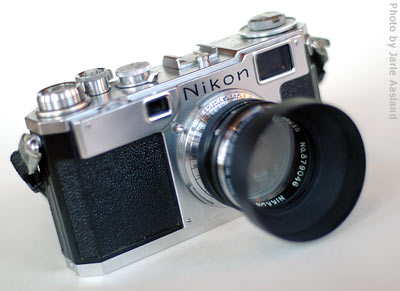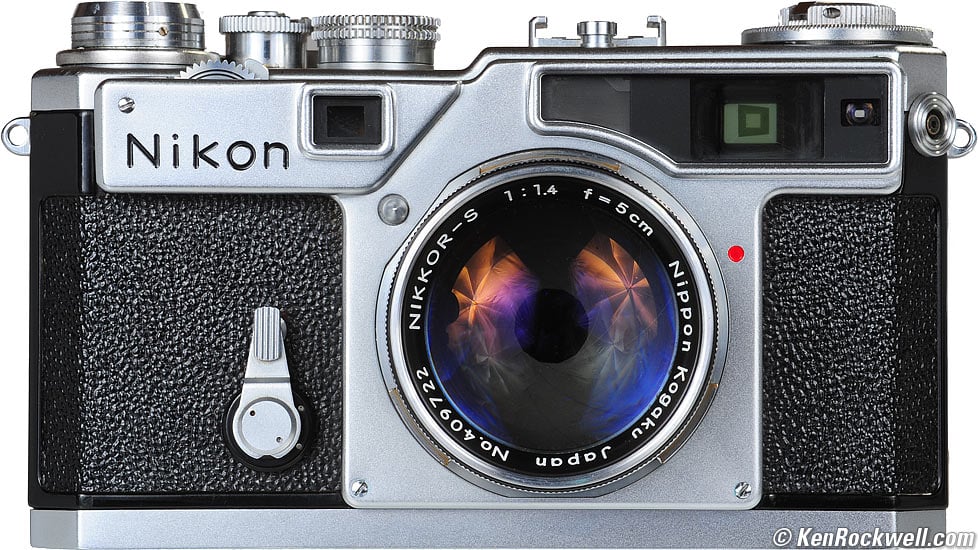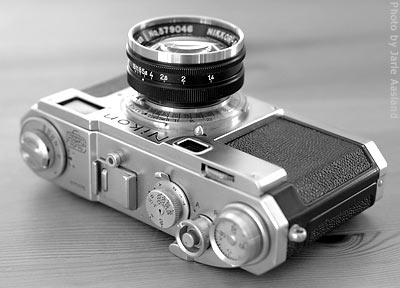

Lesser of these was the comparative lack of "throw" for the focusing knob compared to many earlier models of rangefinder that I've used. There were two specific gripes about the operation of the camera that wore on me. It lacks the pocketability that some other rangefinders (or smaller folders) have which means you will either carry it about with you, or you will keep a bag with you to keep the camera protected as you move about. It may be fast, cheap, and good, but it isn't quite small.
NIKON S2 RANGEFINDER BEST LENSES PATCH
Yellow striped lines help reduce parallax error, while the rangefinder patch in the center clearly shows when an element is not in focus, as evident here.ĭespite having a lot going for it, the camera is not a perfect piece of machinery however. I loaded it up with some Fomapan 200 and decided to see what this fast and capable camera could do.Ī view through the rangefinder shows a simple, yet effective view that allows one to frame and focus readily. This hiccup aside, the camera was mostly a marvel given its pricetag and capabilities. This seemed to work at first, but later gave out, and all attempts since were met with futility. The battery housing held an old corroded mercury battery that I quickly emptied, and later tried to replace using a retrofitted 675 hearing aid battery. It seemed that as long as this camera was in working condition, I may have added a very capable addition to my stable at a very reasonable cost!Īnd work it did! Opening the box, I found a snappy shutter that responded well at all speeds, and smooth aperture and focus rings, as well as a rangefinder that seemed perfectly in sync with the focus dial.
NIKON S2 RANGEFINDER BEST LENSES MANUAL
People raved about the lens, loved the abilities of the camera, particularly the full manual control, and were often able to get fully working examples of these cameras for prices similar to my $18 acquisition. And with this chance, I added a Konica Auto S2 to my collection.Ī tad blocky, but certainly still manageable, the Auto S2 provides an affordable and quality entry to the world of Japanese Rangefinders in a sensible package.Īfter pulling the meager trigger, I took the time to read reviews of this camera and it's rebadged twin, and everything I was reading was outstandingly positive. Its working condition was also unknown, but it looked to be in great condition, so I took the chance. I was pleased to discover before me the option to buy a camera with a faster lens and more shutter speeds for just $18 including shipping. I had gradually been turning my sights to Japanese made range finders, and was nearly to the point of pulling the trigger of a $7 Samoca camera of unknown working condition, when I elected to give the online marketplace one more look. Thankfully this isn't always the case, and with a little searching, one can pick up a good film acquisition with a pretty fast lens for a very good price whose quality is exceptional. In most cases, one can get a good camera with a fast lens, but they may carry a hefty price tag. While the "fast" in this analogy refers to the amount of time in which something is produced, the logic does roughly carry over to the world of photography where "fast" is an extension of quality that tends to refer to a lens with a good maximum aperture compared to other lenses of similar focal length. At best, one will sacrifice one of the three qualities in order to have the other two.


I recall something in the frame of workplace logic that says "Fast, Cheap, Good - Pick Two." The implication behind this is that having all three of these things is just not possible.


 0 kommentar(er)
0 kommentar(er)
